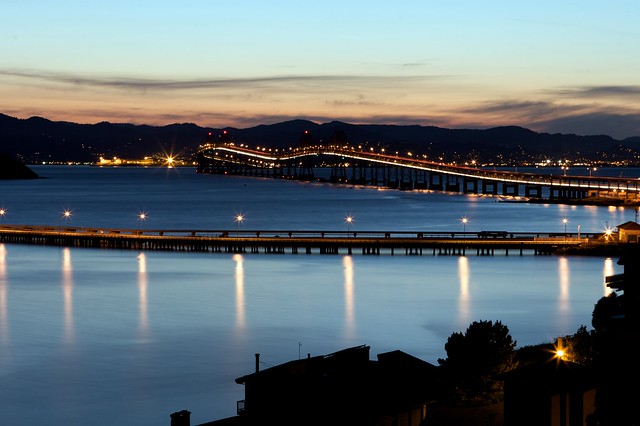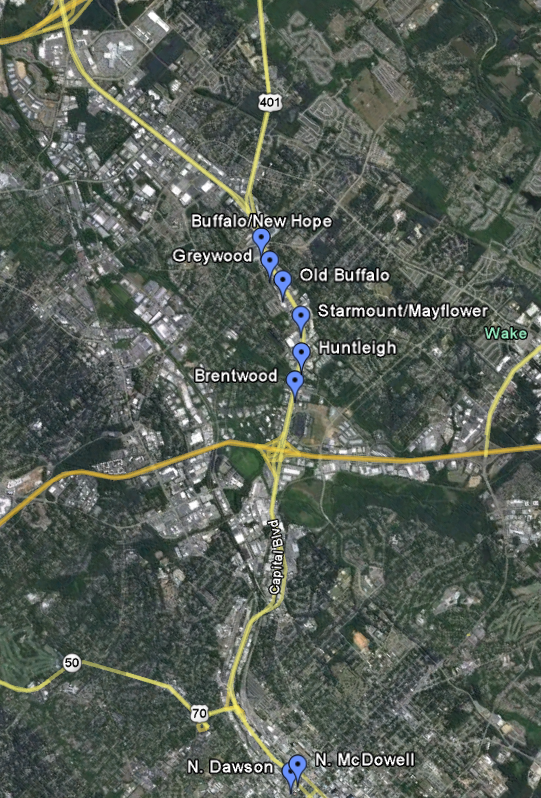San Rafael
It's been a busy week in the County Seat after a few weeks of Novato hogging the spotlight, and why not? There are plenty of empty lots to fill, streets to calm (or not) and parks to lease. The big news, of course, is that baseball is coming to San Rafael now that the City Council has approved the lease of Albert Field to Centerfield Partners. There's talk of a lawsuit from some neighbors, but they haven't yet decided whether to sue or not.
Now that there will be a major pedestrian destination in San Rafael, the city will double-down on pedestrian improvements and try to really solidify a place as a walkable city, right? Actually, no. The city has deemed two intersections along Third Street, both within a quarter-mile of the Transit Center, to be too dangerous to cross. Rather than try to improve the crossings and calm the raging one-way traffic, the city will make it illegal to cross there by removing the crosswalks. Brilliant. The city will hold a public hearing if it hears enough objections from pedestrians.
Greg Brockbank officially launched his campaign for mayor at a party on Sunday. In his speech, he listed things he'd like to see to build up San Rafael: more events, more affordable housing, a shuttle, a downtown hotel, a music pavilion, and drawing seniors downtown. I'd like to add more crosswalks to that list.
A bit further north, a long, long dead Sizzler's near Los Ranchitos will be renovated into a hardware store. This is an undeniably good thing, as North San Rafael has lacked one for over a year. As well, the County is evaluating the old Fireman's Fund building at 1600 Los Gamos as to the feasibility of it housing a public safety complex.
Elsewhere in Marin
- The Ross Valley real estate market is "holding steady," while White Hill and other Ross Valley schools are moving forward with plans to build more classrooms.
- The Town of Ross will hold its annual Town Dinner next Friday, September 30. Get home from work early for some community cheer.
- The oldest business in Marin, Smiley's Schooner Saloon in Bolinas, is up for sale.
- Once again, the Mill Valley Council changed course when confronted by small and vocal opposition, voting unanimously to reject a plan to installing a paid-for electric car charging station.
- Meanwhile, Mill Valley will likely spend around $400,000 to patch, not repave, their roads.
- CalTrans will repave (PDF) a half-mile stretch of Tiburon Boulevard in downtown Tiburon at a cost of $1.2 million.
- Dick Spotswood wanted the facts on affordable housing, and, courtesy of Stand Up for Neighborly Novato, here's some facts for Novato.
- The IJ comes out in favor of Novato's planned downtown city offices, citing economic and symbolic reasons.
- Yet despite this renewed push to have a heart, the city continues its sprawling ways.
- Larkspur's planning director, Nancy Kaufman, has retired to do watercolors and planning consulting.
- MCBC is beefing up its efforts to improve open space bike trails.
SMART News
The SMART project keeps chugging along, with new and old ideas coming up in the editorials of local papers. Mike Pechner opined in the IJ that purchasing CalTrain trainsets would save money over the Japanese DMUs SMART currently has on order. I haven't seen a good comparison, but individually motorized carriages is best-practice in Europe and Asia. Amtrak faces the same questions as SMART, which the Infrastructurist has kindly parsed for us.
Another ongoing debate is the effect of the system on home prices. Conventional wisdom is that homes increase in price when they have proximity to transit, although some believe the noise of the trains will lower house prices. Half-Mile Circles has a fabulous literature review for anyone's perusal on the subject.
Meanwhile, the North Bay Business Journal wonders if an excursion train like the Vine Line is possible along the SMART corridor. The short answer? No.
The Greater Marin
- Contra Costa's Lafayette and Orinda want better downtowns, but it's sparking some debate in the communities about what is, or is not, appropriate. Marin needs a debate like this.
- Streetsblog wonders whether our transit systems should strive for profitability or coverage.
- Wondering what San Francisco was up to this past weekend? Enjoying Chinatown and North Beach streets by closing them off to cars, that's what.

